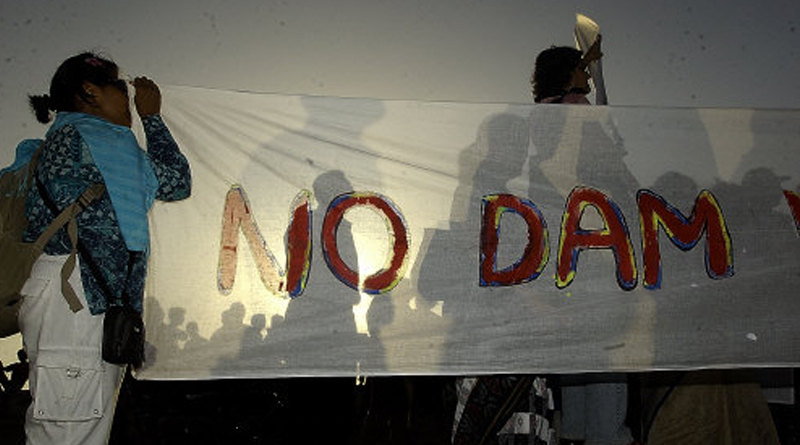Millions of words have been written on the woes of people forcibly displaced by dams, of whom tribal oustees (who lose access to forest produce and grazing) suffer most.
The counter-criticism is that these activists bals the right to development. are denying tribals the right to development.
Many research projects have tried to assess the impact on tribals ousted by the Sardar Sarovar Dam in Gujarat, arguably the most controversial dam ever in India. Such studies do not clearly distinguish temporary from long-run impacts, or assess what living standards might have been without the dam. Nor have researchers asked non-ousted tribals if they might actually want to be ousted and garner the benefits of modernisation.
To get better answers, Prof Neeraj Kaushal of Columbia University and I undertook a research project supported by the International Growth Centre. Many villages near the dam reservoir were only partially evacuated: villagers living above the final water level remained in place. So, we compared the economic conditions of the resettled tribals with those of their former neighbours in the semi-evacuated villages. We also surveyed a third group of tribals in the forest interior within 15 kilometres of the semi-evacuated villages. Almost 80% of the interior villagers lived close to mines of the Gujarat Mining Development Corporation and had benefited from infrastructure, jobs and access to facilities like hospitals. Random samples of 400 households of each group were surveyed.
Most tribals were resettled in the late 1980s and early 1990s.Following a tribunal decision, the Gujarat government offered each male adult (above 18 years) five acres of land regardless of his earlier forest holding (which the forest department claimed was encroached and not legally owned). Additional compensation was offered for loss of houses and livestock.This package was far more generous than earlier ones. The government identified villages in the command area of the project where farmers were willing to sell. With NGO assistance, tribals were to choose the land they wanted to resettle in, and the government bought it for them.
Our surveys showed, unambiguously , that the resettled villagers were better off than their former neighbours in semi-evacuated villages. In a few instances, the interior tribals (near the GMDC mines) were best off. For the resettled, semi-evacuated and interior villages, respectively , the ownership of bicycles was 65%, 31% and 48%; of two-wheelers was 61%, 31% and 46%; of colour TVs was 39%, 23% and 36%; of mobile phones was 88%, 59% and 75%.
Comparing oustees with their former neighbours, the proportion with pucca houses was 18% versus 3%; with electricity was 95% versus 71%; and with drinking water was 45% against 33%. Access to schools was 99% versus 51%, to public health centres was 37% versus 12%, and to hospitals 14% versus 3%.
As for agriculture, tractor ownership was 7% versus 2%. The resettled tribals used more purchased inputs like fertilisers and pesticides, and grew higher-value crops (with irrigation) like paddy and cotton.
Resettled villagers said they adjusted to new conditions and new agricultural techniques (like irrigated paddy cultivation) within two years. They had harmonious relations with the higher-caste folk in their new locations, and had not suffered discrimination or hostility .
Many oustees had complaints. The biggest was that men below 18 years in the cut-off year (who are now in their 40s) got no land whereas their older brothers and parents got five acres each. Some said they got poor land, or no promised jobs.
Would they prefer returning to their old villages, with the same land they had earlier? Around 54% said yes, 30% said no, and others gave no opinion. For a majority, nostalgia for ancestral land and access to forests mattered more than greater material possessions. However, 56% of oustees under 40 years opposed return, revealing a generational divide.
The two other groups were asked whether, if given the oustee compensation package, they would like to be ousted.In semi-evacuated villages, 31% wanted to move, 53% wanted to stay , and others gave no opinion. In interior villages, a majority (52%) wanted to move, 35% wanted to stay and 13% had no opinion. Clearly many tribals, and in some cases a majority , want to quit the jungle.
Despite flaws, Gujarat has done a better job of resettlement than other states. Rehabilitation has been far worse elsewhere. Our research shows that, warts and all, it\’s entirely possible to implement resettlement packages making tribals materially better off. It also explodes the claim of some activists that modernisation is disastrous for tribals, who cannot cope with the change. Many tribals want to leave the forest for a better life.


